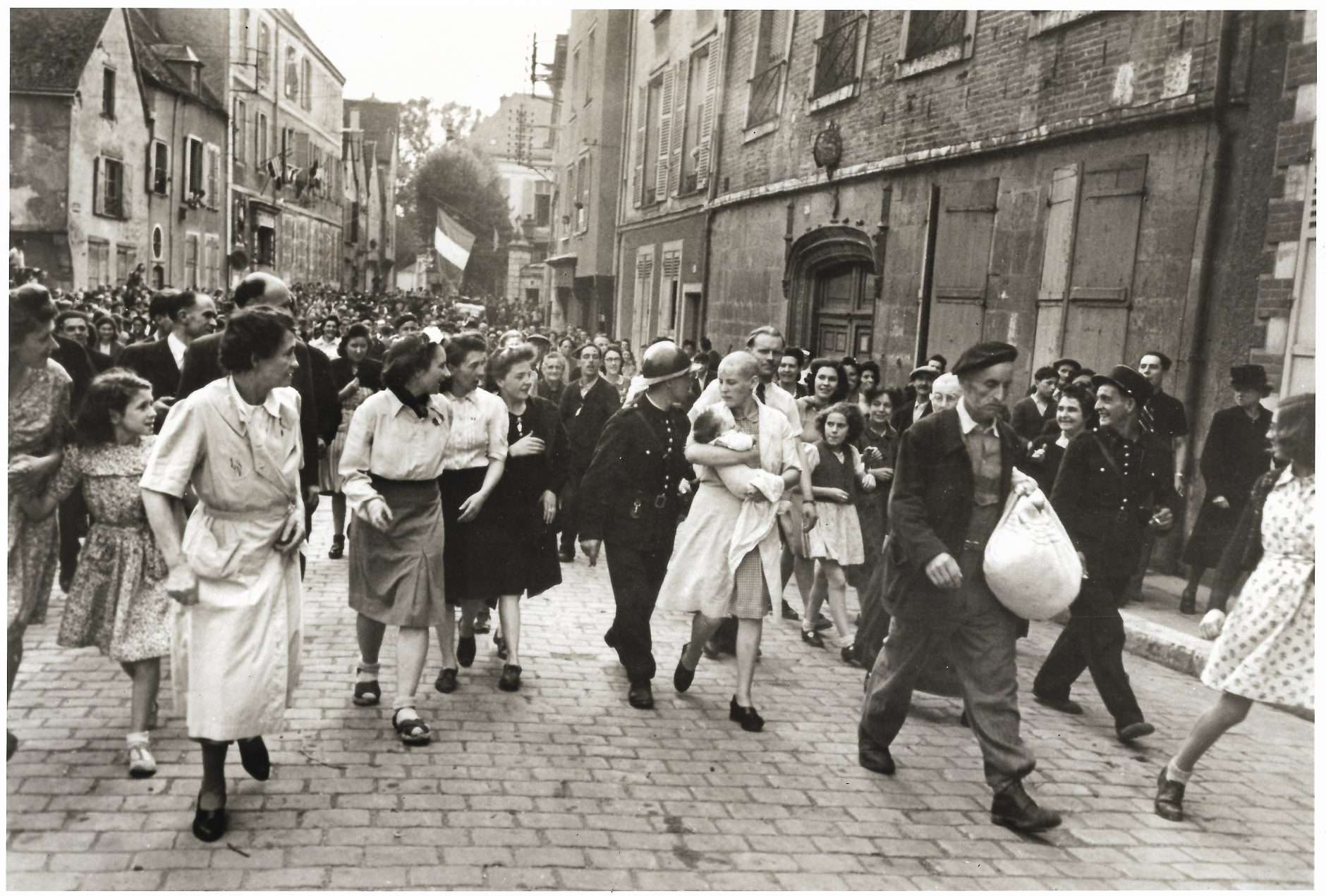CAPA, Robert (1913-1954)
« La Tondue de Chartres »
Period film print
[Chartres, rue Collin-d’Harleville, 16 août 1944], 14,5 x 21,5 cm
Scarce period film print of “La Tondue de Chartres”, Robert Capa’s masterpiece
Fact sheet
CAPA, Robert (1913-1954)
« La Tondue de Chartres »
Period film print
[Chartres, rue Collin-d’Harleville, 16 août 1944], 14,5 x 21,5 cm
Typographical notes on lower margin
Stamped “© Robert Capa” on the back Beautiful contrasts and perfect condition except for two slight creases in the lower right corner and upper right margin (without affecting the image)
Custom-made framing under museum glass, Marie-Louise black laid paper, gilded frame
Scarce period film print of “La Tondue de Chartres”, Robert Capa’s masterpiece
This famous photograph is undoubtedly the most emblematic of the purges during the Liberation in France during the summer of 1944. Robert Capa was a press photographer at the time, embedded with the American 7th Armored Division to cover the Allied advance. Stationed in Chartres on August 16, he spotted a young woman, Simone Touseau, 23, with a shaved head and a branded forehead. It was in the courtyard of the Prefecture, improvised as a place of public execution, whose entrance can be seen in the background, that Simone and ten other women had been tortured and humiliated moments earlier by an improvised people’s tribunal. Left to the wrath of the public, the young woman was marched home in a shameful march, surrounded by the crowd, through the city streets. Positioned at the same time at the front of the procession and in the middle of the road, Capa captured the event on Rue Collin-d’Harleville. The photographer’s use of a wide-angle or 55mm focal length allows him, in addition to embracing the entire scene, to obtain an accentuated vanishing point in which the buildings overlap the crowd driven by a collective impulse for revenge.
With her her baby girl Catherine in her arms as the only defense against hatred (born three months earlier from her relationship with a German soldier), Simone is also accused of collaboration and of denouncing five residents of her neighborhood on Rue de Beauvais, where she lives with her parents. Her father, Georges Touseau, walks towards her, a bundle in his left hand, while behind him, Simone’s mother, Germaine, can just be seen, also shaved. The two women were incarcerated in Chartres prison on September 6, then in the Pithiviers camp in the Loiret department. Georges Touseau, described as “a brave man who does not know how to control the women of his household,” is released. The two women are released in 1946. Simone is subsequently sentenced to ten years of national indignity but is exempt from the ban on residence. She died in 1966, at the age of 44.
By capturing this moment of humiliation, Capa brings to the forefront the scopic impulse that seems to drive the crowd. Often confronted with scenes of extreme violence as a war reporter, the photographer takes a particular turn here, because if the image does not represent the violence of the battlefield itself, it embodies in the crudest sense a popular vengeance already consumed. Capa reveals with virtuosity this human tendency that irresistibly seeks to see, observe and feed on scenes of suffering.
Founded in 1947 by a select group of photographers (including Robert Capa), the Magnum Photos agency aimed to allow them to retain complete control over the rights to their images. This print, stamped “© Robert Capa” on the back with no mention of the agency “Magnum Photos,” therefore predates its founding, making it one of the extremely rare vintage prints.
A major work both for its historical dimension and for its composition, “La Tondue de Chartres” is one of the most striking photographs of the 20th century and remains an inalienable part of the French national narrative.
Provenance:
Private collection
Iconography:
Life, 4 septembre 1944, p. 21
Photo by Robert Capa / ICP / Magnum Photos
